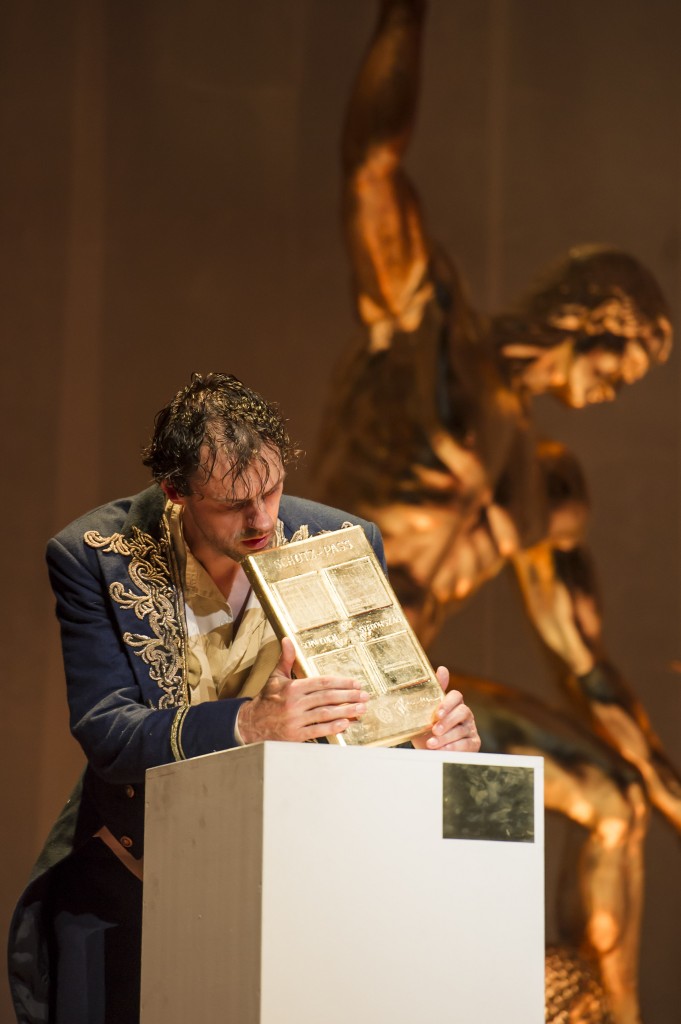Raoul Wallenberg, who has been celebrated for decades as a great hero, would have turned 100 this year. The son of a Swedish family of bankers travelled to Budapest at the beginning of July 1944 on behalf of the War Refugee Board, in order to warn Jews living there of their coming destruction. He used his diplomatic immunity to issue Swedish passports for their protection as well as to create safe housing and is believed to have saved tens of thousands from death. Wallenberg disappeared at the end of the war, allegedly dying in a Russian prison. The first memorial to him had already been erected in Budapest by 1949.
For this anniversary the Swedish embassy to Germany has organized numerous events, including the exhibit “Mir bleibt keine andere Wahl” (I have no other choice) that successfully presents – on printed textile panels – photographical blow-ups and biographical texts on the historical background and deeds of Wallenberg as well as on the survivors he saved. The travelling exhibition, which is divided into three chapters, can be seen starting on 11 November 2012 at Berlin’s Centrum Judaicum.
A very different – decidedly ahistorical – perspective shapes the opera “Wallenberg,” by the Estonian composer Erkki-Sven Tüür with a libretto by Lutz Hübner. It will be performed next on 26 October 2012 at the Baden State Theater in Karlsruhe in a production by Tobias Kratzer that tells a ghost story rather than a tale of a hero. From the beginning the title character cannot accept his inability to do more than he did and appears as if from the hereafter to recapitulate his own actions. In particular during the second act, where the post-war period is depicted, Wallenberg increasingly loses his agency. Instead, a monstrous doppelganger enters the stage, a self-eulogizing heldentenor, who knows his own significance and enjoys the attention of those around him to the fullest. Wallenberg II isn’t only a narcissistic alter ego but even more, he is the mythical memorialization of Wallenberg. The scenography by Rainer Sellmeier underlines that in any case the opera cannot and doesn’t want merely to present history but rather – along the lines of Roland Barthes – to render the “myth of the everyday” as the historical figures and events appear on the stage. Nearly all the characters are masked. The diplomats wear rabbit ears, the SS officers pigs’ heads, and Eichmann comes onstage with the mask of the very snake who is shown in the original Budapest Wallenberg monument as an allegory of evil. Towards the end of the second act, this (here gilded) memorial is dedicated at a grotesque celebratory banquet; its history appears here ultimately to have been ossified in a mythical memorial cult.
Tüür’s atonal music, with its figurative percussive elements, has a concentrating effect on the staged commentary on history and memorializing of Wallenberg, creating a haunting evening at the opera.
Mirjam Wenzel, Media
